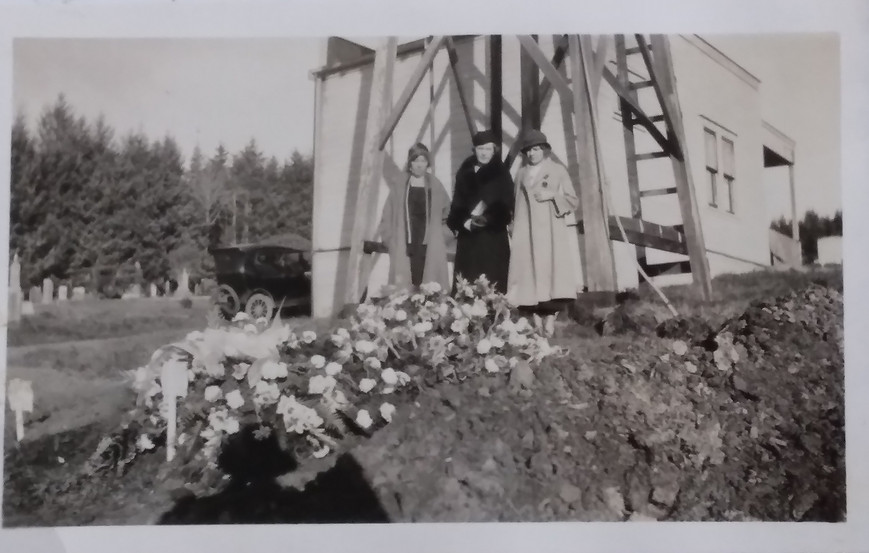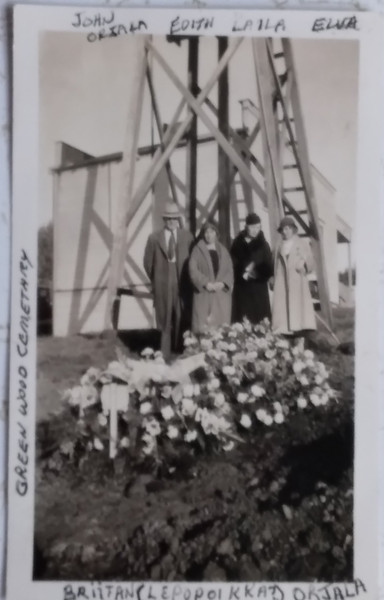From the opening of Greenwood Cemetery in 1891 until after Oregon Highway 202 was constructed in 1917, funeral processions arrived at the cemetery by river steamer. The cemetery had a dock stretching to the low-tide channel of Young's River, where the steamer would tie up. The people gathering for the funeral would load the casket on a small wagon kept in the shed at the head of the dock. The wagon had rope loops for the pallbearers to hold as they trundled the casket to the burial ground.
This 1911 photo was taken from the deck of the steamer as the funeral procession for Maria Raunio headed ashore. (See Suffragettes post on the blog page.) Notice the addition of the inclined ramp at the shore end of the dock. This addition to the dock eased the struggle to climb the steep bank to the cemetery proper. Also visible on the left of the photo is the cemetery caretaker's house. This may be the same house, remodeled over time, or a previous building, as it does not have the same roof line as the present home.
The earliest burials took place near the top of the bank. Note that the point above the bay was already well-populated by 1911. Remote as it was, Greenwood Cemetery was seen as the desirable alternative to other local burial grounds. (Photo courtesy of Laurel Carlson, Astoria)
Historical Photos


September 7, 1911, Maria Raunio was interred near the north boundary of the cemetery, in Section A, just below the brow of the hill. Notice the wooden headboards on the left side of the photo. The line of people in dark clothing beyond the two children are standing where the present north road runs down the hill to the exit. (Photo courtesy of Laurel Carlson, Astoria)

Maria Raunio's casket ready to be lowered. Her wooden headboard is leaning against a neighboring marker, ready to be installed as the grave is back-filled. In Finland, Maria was a Social Democrat. In Astoria, she was involved in issues for worker's rights and women's rights. She died under suspicious circumstances in Astoria, with questions unanswered as to whether she was murdered with morphine, or died of an accidental overdose. Murder was suspected, but unproven. After her death, local communists replaced her wooden marker with a stone marker emblazoned with the communist hammer and sickle. Her descendants from Finland, visiting her grave over a century later, were most distraught over her name being connected with communism. “She was not a communist!” (Photo courtesy of Laurel Carlson, Astoria)


In 1933, Briita Orjala was interred just west of the three early water towers at Greenwood Cemetery. This tower was just above the location of the new information kiosk provided by Friends of Astoria Greenwood Cemetery. Note the cemetery office building in the background, and the old Ford that was now able to be driven to Greenwood after the completion of Highway 202 in 1917. Not shown in the photo, the cemetery had an outhouse (southerners called it 'the necessary') further south and west of the office building. Neither the water towers, outhouse nor the office building exist today. (Photo courtesy of Laurel Carlson, Astoria)

